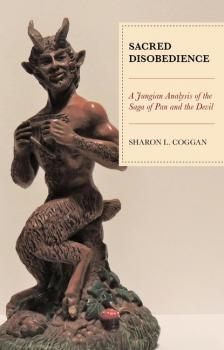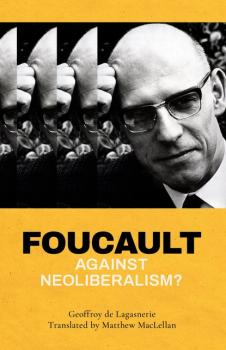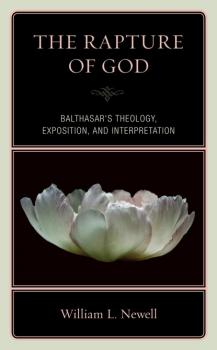MREADZ.COM - много разных книг на любой вкус
Скачивание или чтение онлайн электронных книг.Reversing Climate Change: How Carbon Removals Can Resolve Climate Change And Fix The Economy
'The genius of Graciela Chichilnisky is recognized by economists and with this book she has focused that talent to the dire problem facing mankind. To survive we must do more than stave off a further rise of CO₂ in the atmosphere. We need to reverse it if the planet is to be viable. Professor Chichilnisky's achievement along with her co-author Peter Bal is to show us the way to rescue our future.'<div style='text-align: right;'>Professor Edmund Phelps2006 Nobel Laureate in EconomicsDirector, Center on Capitalism and Society, Columbia University</div>'In the world of economic theory, Graciela Chichilnisky is an A-list star.'<div style='text-align: right;'>The Washington Post</div>'The team of Chichilnisky and Bal has exceptional skill in explaining complex topics with great clarity making it easy for non-scientists interested in climate change to read. They address the science of climate change, the complex international negotiations needed to reach a compromise between developing nations and the developed ones, and importantly the urgent need to find a way of extracting CO₂ from the atmosphere and utilizing and sequestering it in a commercially profitable manner. The last topic has been almost completely ignored by the media.'<div style='text-align: right;'>Theodore Roosevelt IVManaging Director & Chairman of Barclays Cleantech InitiativeBARCLAYS</div>The Kyoto Protocol capped the emissions of the main emitters, the industrialized countries, one by one. It also created an innovative financial mechanism, the Carbon Market and its Clean Development Mechanism (CDM), which allows developing nations to receive carbon credits when they reduce their emissions below their baselines. The carbon market, an economic system that created a price for carbon for the first time, is now used in four continents, is promoted by the World Bank, and is recommended even by leading oil and gas companies. However, one critical problem for the future of the Kyoto Protocol is the continuing impasse between the rich and the poor nations.Who should reduce emissions — the rich or the poor countries?<b>Contents:</b> <ul><li>Introduction: Climate Change and our Future</li><li>Global Crisis and the Mandate of COP</li><li>Insuring the Future</li><li>The Kyoto Protocol and its Carbon Market</li><li>The Road to Paris: An Insider's Timeline</li><li>An Uncertain Future</li><li>Implementing the Carbon Market and its CDM</li><li>The Paris Agreement: Failure as an Opportunity</li><li>Avoiding Extinction</li><li>Four Obscure Articles in the Paris Agreement Hold the Key to Resolve Climate Change</li><li>Reversing Climate Change</li><li>The Future Act of 2018: New U.S. Law Provides Unlimited Tax Credits to Remove CO₂ from Air</li></ul><br><b>Readership:</b> A must read for academics and professionals studying, implementing and analyzing global climate change policies; interested advance undergraduates and postgraduates interested in the follow up of the Kyoto Protocol and UNFCCC 1992 founding.COP21;Climate Change;UNFCCC;Carbon Negative Technology00
Spinach On The Ceiling: The Multifaceted Life Of A Theoretical Chemist
'Karplus's tales of a turbulent graduate school experience at Caltech will inspire readers to muster fortitude when everything seems to be spinning out of control. Karplus balances rigorous scientific discussions with refreshing chapters expounding his passion for photography and gastronomy.'<div style='text-align: right;'>Alfred ChinNature Chemistry, May 2020</div>Nobel Laureate Martin Karplus was eight when his family fled Nazi-occupied Austria via Switzerland and France for the United States. He would later credit his life as a refugee as a decisive influence on his world view and approach to science.Spinach on the Ceiling is an autobiographical telling of Karplus' life story, and how it led him to win the Nobel Prize in Chemistry in 2013. The book captures pivotal moments in Martin's life — from his escape to Switzerland in 1938 shortly after Hitler's entrance into Austria; to memorable moments like when his parents gave him a microscope which opened his eyes to the wonders of science; to his education in New England and California; and his eventual scientific career which took him to England, Illinois, Columbia, Strasbourg, and Harvard. It relates how Martin's optimistic outlook and belief in his vision made it possible for him to overcome setbacks in his life, and turn a subject of study his colleagues considered a waste of time into a central part of chemistry and structural biology. It is his hope to inspire and aid young readers, in particular, to have a successful trajectory in their own lives. Although research and teaching have been his primary focus, he has traveled the world photographing people and places with a Leica IIIC and has had numerous exhibitions of the photographs. He has also enjoyed a lifelong interest in cooking and worked in some of the best restaurants in France and Spain.<b>Contents:</b> <ul><li>Preface</li><li>Acknowledgments</li><li>My Ancestors</li><li>Childhood Years in Europe</li><li>Final Days in Europe</li><li>A New Life in America</li><li>Beginning of Scientific Interests</li><li>College Years</li><li>Graduate School</li><li>Postdoctoral Sojourn in Oxford and Europe</li><li>University of Illinois: NMR and Coupling Constants</li><li>Move to Columbia and Focus on Reaction Kinetics</li><li>The FBI and I</li><li>Return to Harvard University and Biology</li><li>Move to Paris</li><li>Protein Folding, Hemoglobin and the CHARMM Program</li><li>The First Molecular Dynamics Simulation of a Biomolecule</li><li>Early Applications of Molecular Dynamics</li><li>My Career as a Photographer</li><li>How We Came to Move to Strasbourg</li><li>My Life as a Chef</li><li>Announcement of the Nobel Prize</li><li>After the Announcement</li><li>The Nobel Prize Event</li><li>Science After the Nobel Prize Simulation</li><li>Life After the Nobel Prize</li><li>References</li><li><b><i>Appendices:</i></b><ul><li>Karplusians: 1955–2019</li><li>Martin Karplus: LIFE IN COLOR — From the 1940s to 2019</li><li>Nobel Lecture</li><li>Haaretz Article</li><li>Supplementary Material</li></ul></li><li>Index</li></ul><br><b>Readership:</b> A wide range of readers including students, scientists, historians, science enthusiasts, people interested in the Nobel Prize, Nobel Laureates, and the lives of people who escaped from Nazi Austria.Martin Karplus;Nobel Prize;Spinach on the Ceiling;Chemistry;Autobiography;CHARMM;Hemoglobin;Molecular Dynamics;NMR;Coupling Constants;Theoretical Chemistry;Reaction Kinetics;Biomolecular Simulations;BPTI;Photography;FBI;Allostery;Molecular Motors;F1 ATPase;Protein Folding;Enzyme Catalysis;cooking;Oxford;Europe00
Show Dad How
For dads who are excited to be involved with their new baby, but might not quite know where to start, Show Dad How is an ideal resource. From practical to playful, 156 awesome things every new father needs to know–one step at a time. In a series of nearly wordless, highly informative, often hilariously illustrated, step-by-step activities, dads-to-be learn how to do dozens of useful (and fascinating and important and sometimes surprisingly fun) tasks
Reframing Syrian Refugee Insecurity through a Feminist Lens
While there has been a shift in security studies from the security of states to that of people, realpolitik still takes place under the banner of an emerging discourse of "refugee crisis." Located at the intersection of security studies and refugee scholarship, this book is both a process and a product. It explores the multi-leveled sites of refugee security construction and policy translation that play an instrumental role in informing how Syrian refugee insecurity is engendered and experienced in the case of Lebanon. It sheds light on how impromptu choices made by involved bodies—such as the Lebanese government and the UNHCR—can significantly impact local realities, creating a vicious cycle of Syrian refugee insecurities.
Human Dignity, Education, and Political Society
A life of liberty and responsibility does not just happen, but requires a particular kind of education, one that aims at both a growth of the human soul and an enrichment of political society in justice and the common good. This we call a liberal education. Forgetfulness of liberty is also a forgetfulness of the multi-dimensional nature of the human person, and a diminution of political life. Keeping in mind what can be lost when liberal education is lost, this volume makes the case for recovering what is perennially noble and good in the liberal arts, and why the liberal arts always have a role to play in human flourishing.Each of the authors herein focuses on the connection of three primary themes: human dignity, liberal education, and political society. Intentionally rooted in the hub that joins the three themes, each author seeks to unfold the contemporary significance of that hub. As a whole, the volume explores how the three themes are crucial to each other: how they illuminate each other, how they need each other, and how the loss of one jeopardizes the wellbeing of the others. In individual chapters, the authors engage various relevant aspects of liberal education. As a result, the volume is organized into three parts: Liberal Education and a Life Well Lived; Thinkers on Dignity and Education in History; Contemporary Topics in Dignity and Education. As education is increasingly channeled into an ever more narrow focus on technical specialization, and measured against professional success, students themselves face a maelstrom of campus politics and competing political orthodoxies. These are among the issues that tend to militate against the operative liberty of the student to think and to speak as a person. This edited collection is offered as an invitation to think again about the liberal arts in order to recover the meaning of education as the authentic pursuit of the good life or eudemonia.
Sacred Disobedience
Sacred Disobedience: A Jungian Analysis of the Saga of Pan and the Devil traces the ancient Greek God Pan, who became distorted into the image of the Devil in early Christianity. When Pan was demonized, the powerful qualities he represented became repressed, as Pan’s visage twisted into the model of the Devil. This book follows a Jungian analysis of this development. In ancient Greek religion, Pan was worshipped as an honored deity, corresponding to an inner psycho-spiritual condition in which the primitive qualities he represented were fully integrated into consciousness, and these qualities were valued and affirmed as holy. But in the era of early Christianity Pan “dies,” and the Devil is born, a twisted inflation, possibly due to an underlying repression. In the Jungian system, repressed psychic contents do not disappear, as proponents of the new order tacitly assume, but distort and grow more powerful, or “inflate,” to cripple the psyche that refuses to incorporate these split-off elements. Repressed contents will expand to explosive force as the repressed elements eventually return regressively from below. It becomes important then, to understand what qualities the primitive Goat God carried, to appreciate what was repressed in the Western psycho-spiritual system, and what subsequently needs reintegration.
Foucault against Neoliberalism?
In the late 1970s, Michel Foucault dedicated a number of controversial lectures on the subject of neoliberalism. Had Foucault been seduced by neoliberalism? Did France’s premier leftist intellectual, near the end of his career, turn to the right? In this book, Geoffroy de Lagasnerie argues that far from abandoning the left, Foucault’s analysis of neoliberalism was a means of probing the limits and lacunae of traditional political philosophy, social contract theory, Marxism, and psychoanalysis. For Lagasnerie, Foucault’s analysis was an attempt to discover neoliberalism’s singularity, understand its appeal, and unearth its emancipatory potential in order to construct a new art of rebelliousness. By reading Foucault’s lectures on neoliberalism as a means of developing new practices of emancipation, Lagasnerie offers an original and compelling account of Michel Foucault’s most controversial work.
Minority Women and Western Media
Minority Women and Western Media: Challenging Representations and Articulating New Voices presents research examining media portrayals of women from Africa, Asia, Australia, Europe, and North America. It provides qualitative and quantitative findings of how women are stereotyped and misrepresented not only because of their gender but also their race, religion, ability, physical attributes, and political status. Whilst their voices are frequently excluded, marginalized and misrepresented, the chapters in this volume show how minority women are creating and articulating new discourses and challenging assumptions and expectations about themselves. This book provides insights into how women are represented in different media, including newspapers, television shows, films, and online platforms. Scholars of media studies, women’s studies, and communication will find this book particularly useful.
The Rapture of God
This is a book offering Balthasar’s theological oeuvre as a kerygma of Christ’s love proclaimed theologically as Christ’s esthetics of glory in his mission to reinvent himself, the world and us as beauty and glory. Balthasar’s hypothesis is that there is true theology and there is false theology. For him, theology is the unique science across the methods of which the decision of faith cuts, and divides it into two halves that cannot be united to each other: a genuine theology, which presupposes faith and does its thinking within the nexus of Christ and the Church; and a false theology, which rejects faith as methodologically dubious and irresponsible, and subsumes the truth of the phenomenon which discloses itself, under an anthropological truth (however this may be understood).In William Newell’s book he deeply reflects on the radical thinking being done in Catholic theology since the 1940s in Europe and now in the United States. Each chapter, each excursus, each elision, ushers the reader towards consolations without previous causes, the essence of mysticism in its first stages. The book, as with true theology, is a ‘come and see’ beckoning the reader to an endless furtherance of the archetypal experience of Christ.
Safety Management Systems
Safety Management Systems: Applications for the Aviation Industry provides an in-depth review of specific applications of an aviation-related Safety Management System (SMS) by following it from design through application. Readers will gain an understanding of SMS and how it relates to their daily activities. Also, specific information is provided on the rotocraft industry, due to variations in the challenges it faces.









